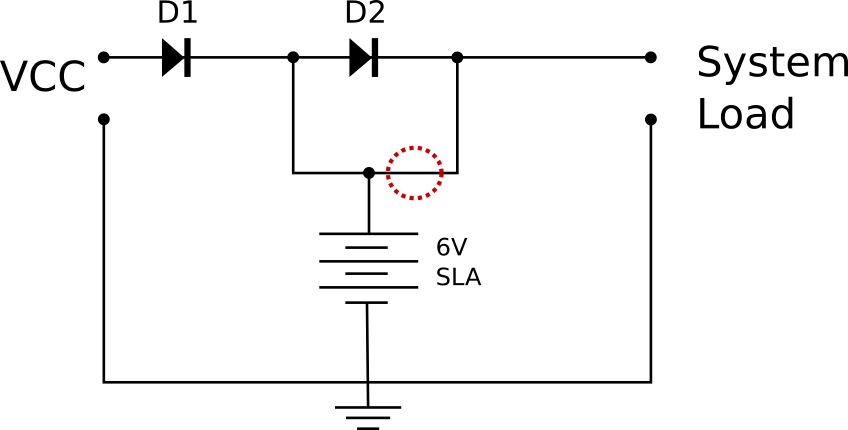I want to convert a circuit that runs on 6V DC (from an intermitent power source) to a battery-operated one, by adding a Sealed Lead-Acid (SLA) battery.
This would fulfill the following scenarios:
- When intermitent source is active, it powers the system load and recharges the battery;
- When intermitent source is shut off, the battery powers the system load;
- When intermitent source is active but system load momentarily demants too much power, the battery provides that extra.
I designed this simple circuit (I am no electrical engineer), and identified a region where I would like the path to be "interrupted" or "switched-off" when VCC is present. The drawings are below.
Nominal VCC is tuned by zener to be 6.8V, suggested by the manufacturer to be a good float voltage to the expected temperature range of use where I live.
So the question is: what components, in what configuration, could be used to "sense" VCC present, and shut the red-circled branch?
I have seen some designs using a mosfet, but I'm not sure where should I put one in this circuit (where to connect gate, drain, source), and if any other component would be needed, and their values.




